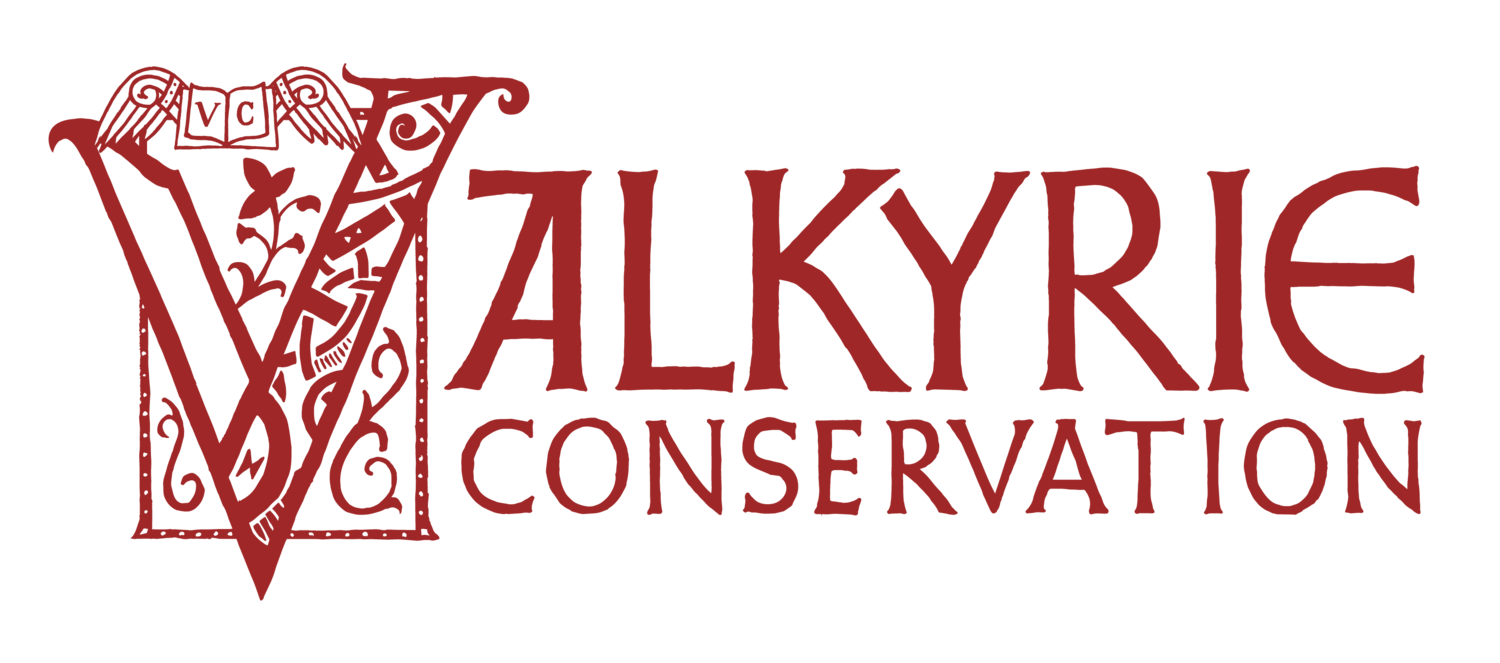FAQs
Can you tell me how much my book is worth?
No. This practice strictly contradicts the AIC Code of Ethics. I am trained to treat every item regardless of monetary value. You should seek out an appraiser or rare book collector to determine the value of your books.
How expensive are treatments?
Every treatment is going to have an individual price tag, but typically treatments will start at around $150. Primarily you are paying for labor, but for more expensive materials such as leather or larger items you can expect to pay more.
Are payment plans available?
While I prefer to simply have you make one payment when the treatment is complete, I am definitely willing to work with you on coming up with a payment plan. If the payment is broken up I will require a down payment before treatment begins.
I don’t have any expensive books, who are your usual clients?
My mentor, Mark Andersson (owner of Panther Peak Bindery, Tucson), always said “everyone has at least one book that is worth conserving”. My clients can be anyone with a book or paper object that has enough value, sentimental or otherwise, that they deem my services worthy. I can work with your family heirlooms, grandma’s cookbook, duct-taped children’s books, bibles, photo albums, and scrapbooks. I also have worked with institutional libraries and historical societies on both individual treatments and larger surveys of collections. So do not hesitate to reach out and see if treatment is the right course for you and your object. Estimates do not cost anything!
I don’t see your address listed anywhere, how do I find your studio?
Because my studio is at my private residence, I want to keep the address semi-private. If you reach out to me about doing an estimate or bringing something to the studio I will send you the address at that time. Studio is available by appointment only.
I’ve heard of art restoration, is conservation the same?
It shares some of the same principles, but I like to explain the differences between restoration, conservation, and preservation as a spectrum. The spectrum represents the level of intervention on the structure of the object. Preservation is the least interventive method where conservators make choices to benefit the object’s longevity by manipulating the environment the object is stored rather than on the object itself. Preservation could include methods such as controlling the humidity in its storage area, placing the book in a custom box, or interleaving glassine sheeting between delicate prints. Conservation probably covers the largest area of the spectrum because it can be both minimally and extremely interventive. Conservators employ mechanical and chemical treatment methods to slow degradation of objects. However, the key distinction between conservation and restoration is the final appearance of the object. Conservation seeks to preserve evidence of history and wear, and as such the goal is never to trick the eye into thinking a treatment repair is original to the object. Rather our goal is to minimize the appearance of repairs so as not to detract from original material. Restoration sits at the opposite end of the treatment spectrum from preservation. Often the goal of restorers is to make the book or object look more like the day it was created. Book conservators often dabble in restoration especially when a book requires a new binding. However, restoration becomes a problem when it crosses into the territory of forgery and tricking viewers into thinking new material is original
